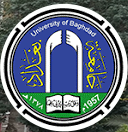Abstract
The grain milling industry is one of the oldest and most famous industries. It has been known to man since a long time ago. Stone was used for grinding, and then water and air were used to run the mills until the machines and machines represented by cylinders and cylinders powered by electric power were used. This industry also witnessed a great development in Iraq over the years. The eras that passed by, especially in the second half of the twentieth century, as a result of the increase in population numbers and being the basic food for humans, several mills were established in Baghdad and the rest of the other provinces, including the Dora Mill, which was established in 1979 affiliated with the General Company for Grain Manufacturing, This industry goes through several stages, starting from receiving the raw material (wheat) from the silos until it is milled and converted into flour to be packed and transported to agents and then distributed to the citizens. There are several factors that constitute a key factor in the extent of its success, including the factor of locations, availability of water, electric power and fuel, and the transport factor, which is one of the important factors that contribute to its success as it uses large and cheap raw materials, as well as government policy and direct and indirect state interventions in it.
Article Type
Article
First Page
268
Last Page
291
Publication Date
6-15-2023
Creative Commons License

This work is licensed under a Creative Commons Attribution 4.0 International License.
Recommended Citation
Khalifa, Sattar Jabbar
(2023)
"Components of Endemic Grain Milling Industry: Dora Mill as a Model,"
Alustath Journal for Human and Social Sciences: Vol. 62:
Iss.
2, Article 12.
DOI: 10.36473/ujhss.v62i2.2048
Available at:
https://alustath.researchcommons.org/journal/vol62/iss2/12










